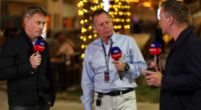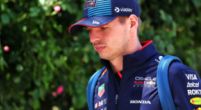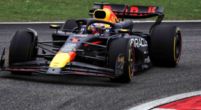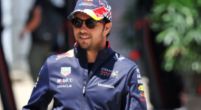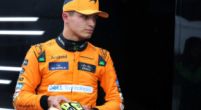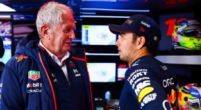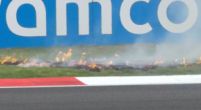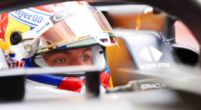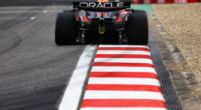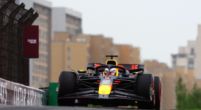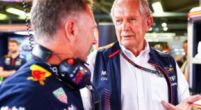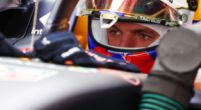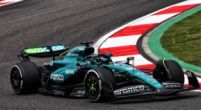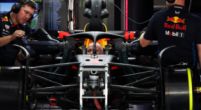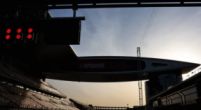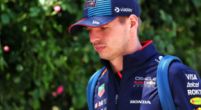F1 News

Friday analysis | Long run data suggests Perez can challenge Verstappen
Max Verstappen topped both practice sessions in Jeddah ahead of the Saudi Arabian Grand Prix but it might not be so straightforward for the rest of the weekend. His teammate Sergio Perez had really strong pace on the long runs whilst the Dutchman had to manage an issue. Aston Martin and Ferrari look to be closer on the long runs than they do other a single lap.
Sector times
The Jeddah track is the fastest street circuit that Formula 1 visits. Average speeds in qualifying are over 250 km/h with drivers climbing above 310 km/h on three separate occasions during a single push lap. Over 80% of the lap is spent at full throttle and many of the corners can be taken flat-out given the soft angle.
All three sectors are pretty quick, but the first is slightly slower with tighter turns. The first corner is particularly tight, and then the drivers have to flick the steering wheel in the opposite direction almost immediately to take the second corner. There are elongated chicanes throughout the circuit, this one is one of the tightest. To have better confidence in this sector, drivers might opt for a higher downforce setting on their cars. Going down this route should also help them during the Grand Prix because it would mean the tyres do less sliding and therefore should last longer.
However, in the following two sectors, having a high downforce is negative. Without DRS, it becomes difficult for the cars to dump drag and they will therefore lose time during the faster areas of the circuit. This means that during the race, when DRS isn't available regularly, a high downforce reduces performances in sectors two and three. The best sector times might allow us to identify which set-up the teams tried in the second free practice session.
The Red Bull drivers and Alonso are very evenly matched throughout all sectors. This shows that they're running a very similar setup. Alonso loses a tenth in the final sector and that might be an early indication of tyre wear but it's an extremely small delta so it's impossible to tell. Ferrari were lagging behind. The biggest delta to Verstappen is in sector one which could mean they are running slightly less downforce. A deeper dive into the corner analytics in qualifying will confirm this when they turn their 'newer' engines up.
It is worth noting that Fernando Alonso lost his second-fastest push lap because Sainz blocked up accidentally. It was a similar story for Verstappen who got caught out by a double yellow flag. The Dutchman set his quickest time on four-lap old soft tyres.
| Driver | Best sector 1 | Best sector 2 | Best sector 3 | Ultimate lap time |
| Verstappen (1st) | 32.619 (fastest) | 28.401 | 28.570 | 1:29.590 |
| Alonso (2nd) | 32.640 | 28.317 (fastest) | 28.677 | 1:29.634 |
| Perez (3rd) | 32.880 | 28.496 | 28.510 (fastest) | 1:29.886 |
| Russell (5th) | 32.803 | 28.508 | 28.759 | 1:30.070 |
| Stroll (7th) | 32.811 | 28.499 | 28.772 | 1:30.082 |
| Leclerc (9th) | 32.943 | 28.631 | 28.767 | 1:30.341 |
| Sainz (10th) | 32.981 | 28.669 | 28.749 | 1:30.399 |
Tyre degradation and long run
Tyre degradation became a big talking point in the Bahrain Grand Prix. Red Bull Racing were able to go soft-soft-hard in the race whilst others had to go soft-hard-hard. This gave them the upper hand on strategy, but the performance on track was also remarkable. They were losing around five-tenths from the start of the soft stint to the end, whereas other drivers were losing well over a second.
Bahrain is the most abrasive circuit over the year. Jeddah is almost the opposite. Pirrelli mark this circuit as a level two (out of five) on their asphalt abrasion chart and this gives other teams some hope that they can take on Red Bull over the duration of a race. As always, fuel loads and engine modes remain unknown during the second free practice session.
As highlighted by Verstappen in the post-session interviews with Sky Sports: "The long run seemed fairly close to each other, but it's more because of managing the tyres." It's almost as if drivers and teams were doing the reverse. In other words, driving to a delta with tyre management. Teams will then deeply analyse the degradation on the tyre and work out how the management has gone and whether they can push more, or have to push less.
Long run
| Driver | Average Lap time long run | Tyre |
| Verstappen | 1:35.215 | Soft |
| Perez | 1:35.067 | Medium |
| Alonso | 1:35.364 | Medium |
| Sainz | 1:35.375 | Soft |
| Leclerc | 1:35.459 | Medium |
During the second part of practice, Verstappen was managing a downshift issue. This could be why he is usually behind Perez, but we know the Mexican is strong on this circuit. Perez's times during this stint actually improved as the tyres got older. Both of these points combined would suggest that there is plenty of push room left for the Red Bull Racing drivers. Alonso and both Ferrari drivers stayed relatively flat throughout their stints.
Ferrari seem to be much closer to the podium places on the long runs than they do in the qualifying simulations. It's likely Leclerc would've been more focused on long run data today because he carries the 10-place grid penalty into the race.
A lot of teams tried the soft tyres. This would suggest they were trying to see whether or not they could start the race on this tyre. This would give them a better launch off the line but it would obviously wear out much quicker.

